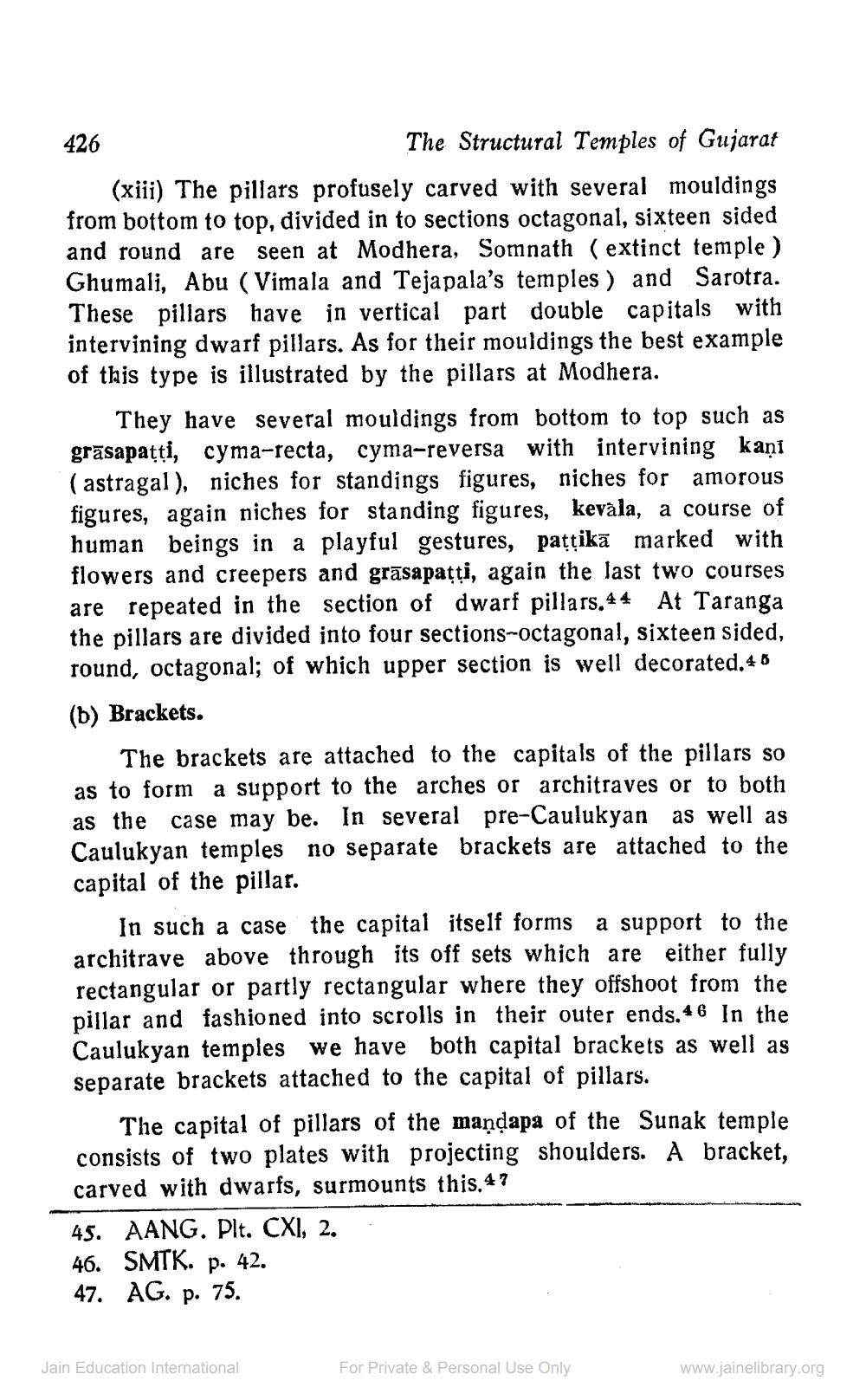________________
426
The Structural Temples of Gujarat (xiii) The pillars profusely carved with several mouldings from bottom to top, divided in to sections octagonal, sixteen sided and round are seen at Modhera, Somnath (extinct temple ) Ghumali, Abu (Vimala and Tejapala's temples) and Sarotra. These pillars have in vertical part double capitals with intervining dwarf pillars. As for their mouldings the best example of this type is illustrated by the pillars at Modhera.
They have several mouldings from bottom to top such as grāsapatti, cyma-recta, cyma-reversa with intervining kani ( astragal), niches for standings figures, niches for amorous figures, again niches for standing figures, kevala, a course of human beings in a playful gestures, pațţikā marked with flowers and creepers and grāsapatti, again the last two courses are repeated in the section of dwarf pillars.44 At Taranga the pillars are divided into four sections-octagonal, sixteen sided, round, octagonal; of which upper section is well decorated. 40 (b) Brackets.
The brackets are attached to the capitals of the pillars so as to form a support to the arches or architraves or to both as the case may be. In several pre-Caulukyan as well as Caulukyan temples no separate brackets are attached to the capital of the pillar.
In such a case the capital itself forms a support to the architrave above through its off sets which are either fully rectangular or partly rectangular where they offshoot from the pillar and fashioned into scrolls in their outer ends. 46 In the Caulukyan temples we have both capital brackets as well as separate brackets attached to the capital of pillars.
The capital of pillars of the maņdapa of the Sunak temple consists of two plates with projecting shoulders. A bracket, carved with dwarfs, surmounts this.47 45. AANG. Plt. CXI, 2. 46. SMTK. p. 42. 47. AG. p. 75.
Jain Education International
For Private & Personal Use Only
www.jainelibrary.org




